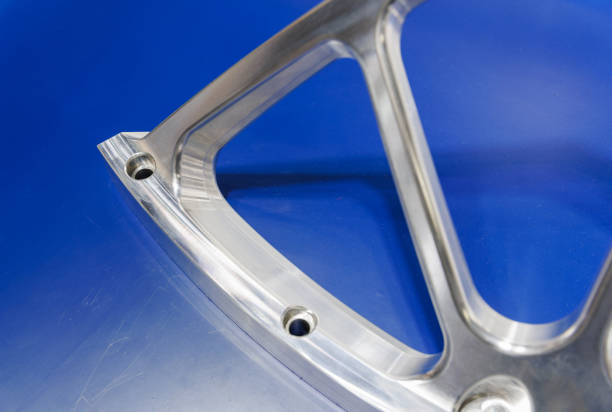Introduction to Lightweight Materials
In the ever-evolving world of transportation, the quest for efficiency, sustainability, and performance drives innovation. Lightweight materials, particularly magnesium, titanium, and carbon fiber, are at the forefront of this transformation. These advanced materials are revolutionizing various aspects of mobility, offering significant advantages over traditional materials like steel and aluminum.

Benefits of Lightweight Materials
Enhanced Fuel Efficiency
Lightweight materials significantly enhance fuel efficiency by reducing the overall weight of vehicles. This leads to lower fuel consumption, which is crucial for both traditional combustion engines and electric vehicles (EVs). For EVs, reducing weight extends the battery range, making these vehicles more practical for everyday use.
Example:
- Magnesium: Known for being one of the lightest structural metals, magnesium helps reduce vehicle weight, thereby increasing fuel efficiency.
Improved Performance and Handling
Reducing the weight of vehicles not only improves fuel efficiency but also enhances overall performance and handling. Lightweight materials contribute to better acceleration, braking, and maneuverability, which are critical for high-performance and luxury vehicles.
Example:
- Carbon Fiber: Its high tensile strength and rigidity make it ideal for components such as body panels and chassis, significantly improving vehicle dynamics.
Sustainability and environmental impact
Using lightweight materials helps reduce greenhouse gas emissions by lowering fuel consumption. Moreover, materials like magnesium and titanium are recyclable, aligning with global efforts to promote sustainability and reduce environmental footprints.
Example:
- Titanium’s corrosion resistance and durability make it a sustainable choice, as it requires less frequent replacement and is fully recyclable.

Case Studies of Lightweight Materials
Automotive Industry
Case Study 1:
- BMW i3: This electric vehicle extensively uses carbon fiber reinforced plastic (CFRP) for its passenger cell, significantly reducing weight and enhancing battery efficiency.
Case Study 2:
- Ford F-150: The use of high-strength aluminum alloy in the body structure has reduced the truck’s weight by up to 700 pounds, improving fuel economy and payload capacity.
Aerospace Industry
Case Study 3:
- Boeing 787 Dreamliner: This aircraft utilizes carbon fiber composites for its fuselage and wings, contributing to a 20% reduction in fuel consumption compared to similar-sized aircraft made from traditional materials.
Case Study 4:
- Airbus A350: The extensive use of titanium and carbon fiber reinforced polymer (CFRP) enhances fuel efficiency and reduces maintenance costs due to their durability and corrosion resistance.
Marine Industry
Case Study 5:
- America’s Cup Yachts: The use of carbon fiber in the construction of these racing yachts significantly reduces weight while maintaining structural integrity, leading to improved speed and performance.
Case Study 6:
- Naval Vessels: The incorporation of lightweight materials like titanium in critical components reduces overall ship weight, enhancing speed and fuel efficiency.
Conclusion
The future of lightweight materials in transportation is bright, with magnesium, titanium, and carbon fiber leading the way. These materials are transforming the industry by offering unparalleled strength, durability, and sustainability. As research and development continue to advance, the adoption of lightweight materials will become even more widespread, driving the evolution of efficient, eco-friendly, and high-performance transportation systems.
FAQ
Q: What are the main benefits of using lightweight materials in transportation?
A: Lightweight materials enhance fuel efficiency, improve vehicle performance and handling, and contribute to sustainability by reducing greenhouse gas emissions.
Q: Which lightweight materials are commonly used in the automotive industry?
A: Magnesium, titanium, and carbon fiber are commonly used in the automotive industry for various components, including engine parts, body panels, and chassis.
Q: How do lightweight materials impact electric vehicle performance?
A: Lightweight materials reduce the overall weight of electric vehicles, which extends battery range and improves energy efficiency.
Q: What challenges are associated with using magnesium in transportation?
A: Magnesium can be susceptible to corrosion and flammability. However, advancements in coating technologies and alloy development are addressing these challenges.
Q: Are lightweight materials recyclable?
A: Yes, materials like magnesium and titanium are recyclable, which enhances their sustainability and reduces their environmental impact.
Q: How do lightweight materials contribute to aerospace advancements?
A: Lightweight materials like titanium and carbon fiber improve fuel efficiency, reduce maintenance costs, and enhance the performance and longevity of aerospace components.








